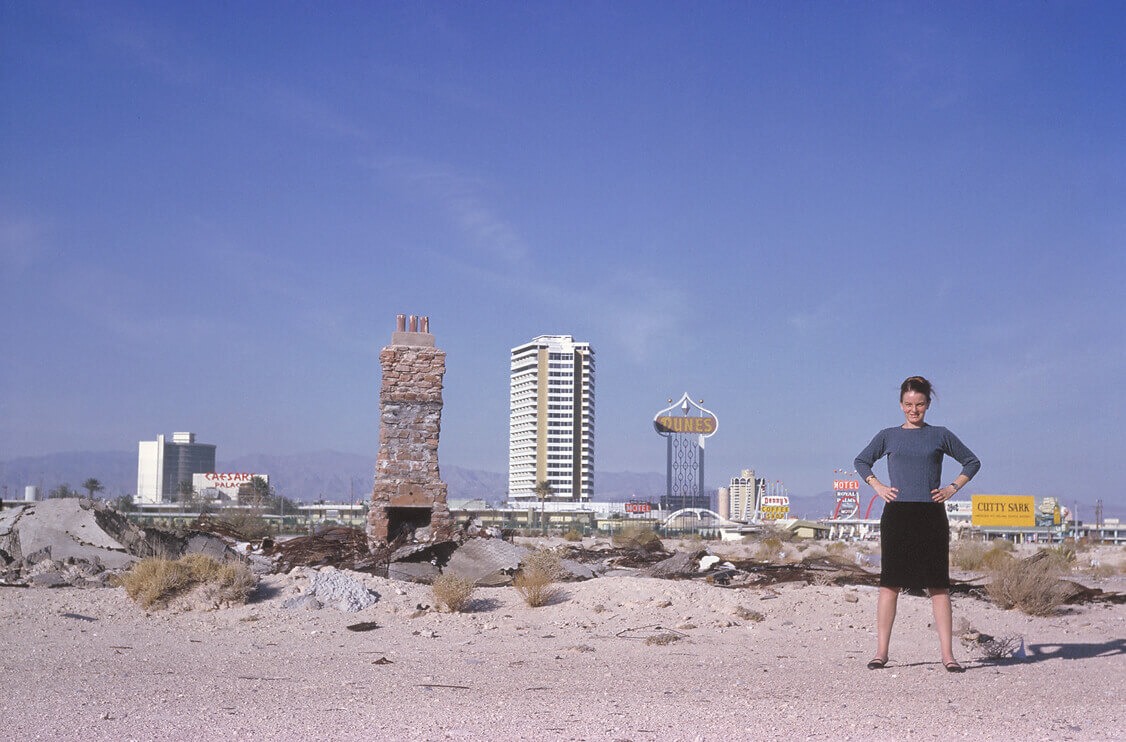It was a brisk Wednesday afternoon, and the sun was somewhere between coming and going. My mom had just driven to New York from Boston. She picked me up from work like how she used to pick me up from school, and we headed to the old Yiddish Theater in the East Village, which is now Village East by Angelika. We were on our way to see Stardust: The Story of Robert Venturi and Denise Scott Brown by Jim Venturi and Anita Naughton, presented by the Architecture & Design Film Festival (ADFF).
Stardust was more than 20 years in the making. Jim started interviewing people and compiling footage for the documentary in 2002, and Anita joined the project team ten years ago. I worked for Jim at ReThinkNYC for almost five years before joining AN. My mom, a retired Boston Public School social worker, had always wanted to meet Jim, who’s been a mentor to me and a friend. That’s why she schlepped all the way down to New York that day. “Will there be famous people?” my mom asked in the car. “Probably,” I replied.
We arrived at the Yiddish Theater around 6:00 p.m. Jim was on the sidewalk greeting people and taking pictures with friends. I tapped him on the shoulder, and we hugged. We hadn’t seen each other in a while. “This is my mom,” I said. Jim and Mom spoke for a few minutes. Next thing I knew Alexandra Lange was there; she also met my mom. And then came Paul Goldberger, James Wines, Kriz Kizak, Henry Smith-Miller, Laurie Hawkinson, Mira Friedlander, Patterson Sims, and Martin Filler. And then Peter Eisenman and Cynthia Davidson, and Beatriz Colomina and Mark Wigley.
ADFF founder Kyle Bergman gave opening words, and Venturi, Filler, and Gabrielle Espardy had a brief discussion about Stardust after the screening, pictured below. Naughton was brought onstage to everyone’s delight. We all clapped for her. Filler lambasted the Sainsbury Wing’s ongoing renovation by Selldorf Architects. Jim shared intimate memories of the last few days of his dad’s life in Philadelphia.
“That part in the movie when Denise said it was better to be a woman in the 1920s than the 1950s—it’s true,” Mom said later that evening on our way home. “Really? Why?” I asked. Mom proceeded to tell me what her childhood was like during the postwar baby boom, a period of her life she rarely talks about. “Women couldn’t have their own bank accounts until the 1970s, for god’s sake!” she said rather animatedly. “I never knew that,” I said, a bit ashamed for not having known that.
“Everyone always knew about Bob, but not Denise,” my mom said on the phone in the days after the screening. “How could anyone possibly hate that woman? She’s absolutely wonderful! Any working woman can relate to her. What was the Nazi’s name?” Mom asked. “Philip Johnson,” I replied. “I would consider it a badge of honor to be hated by that guy,” she said with chutzpah.
Indeed, Stardust did something one wouldn’t expect from a documentary film about famous architects. It was a love story first, where architecture came second. It provoked essential conversations about gender, labor, and the “star system” between generations, like the stories it inspired my mother to tell me about her own lived experiences.
“I thought about [Stardust] for the rest of the night,” James Wines told me afterward. “It’s a real film! I’ve seen so many architecture documentaries in my life. I’m 92 years old now, mind you! And most of them put me to sleep. They also tend to be pretentious and inflate the architect’s importance. This wasn’t like that at all,” Wines said. “Capturing architecture in film is not at all an easy thing to do. [Stardust] was a genuine work of art.”
“Bob, Denise, and I share a similar sense of humor. We have a lot of the same sardonic views about the profession, especially its pomposity,” Wines said. “I often tell students, ‘If you really want to be creative, don’t go to the GSD and read boring papers.’ I tell them, ‘Just look at the dumbest thing you’ve ever seen. That’s where the ideas are!’ It’s like what Duchamp did. The dumbest thing you’ve ever thought of is probably where nobody else is looking. I think Bob and Denise also had that sensibility.”

